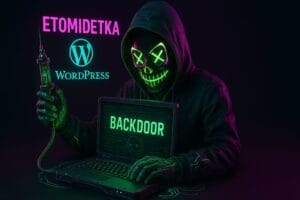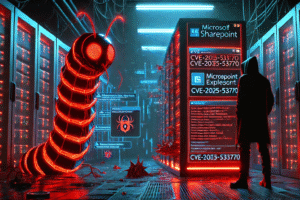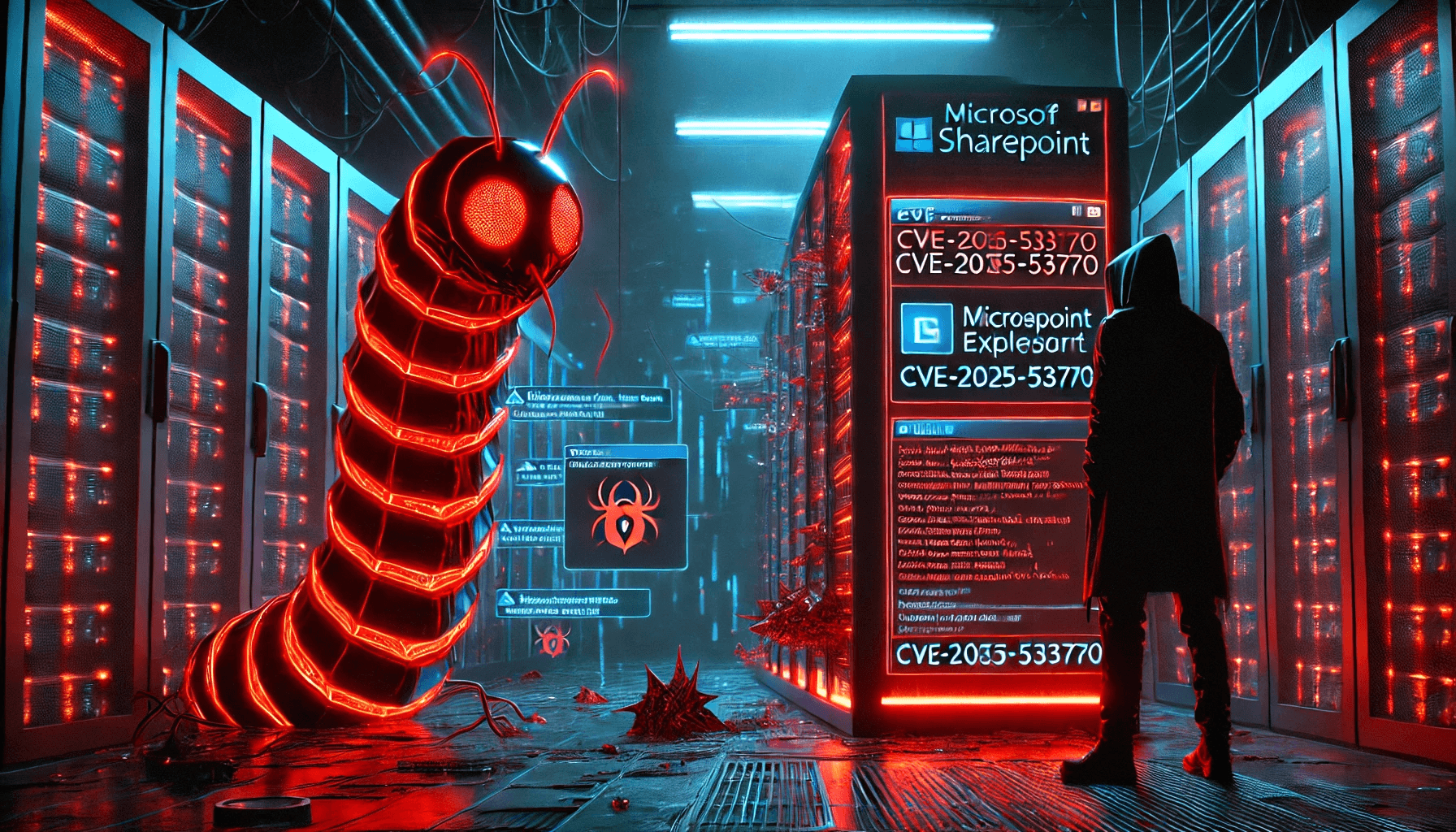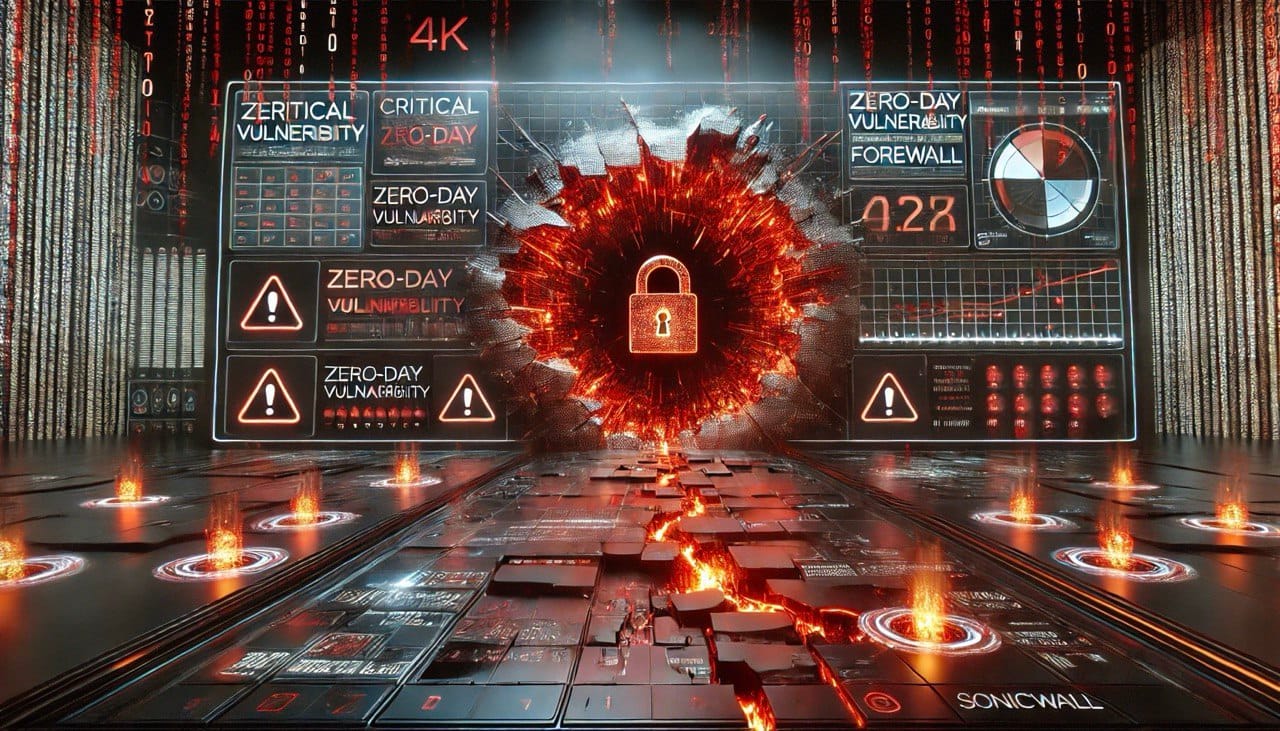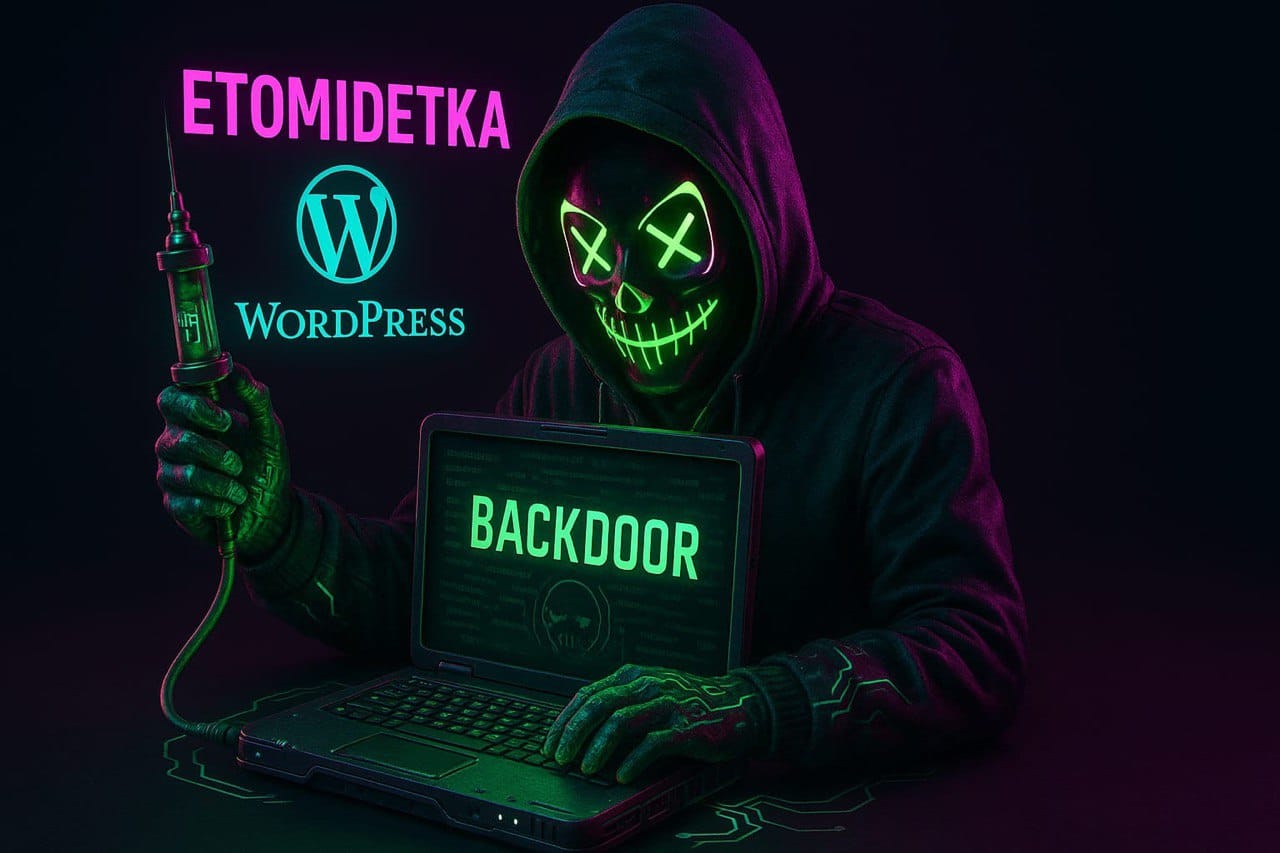Introduction: The Silent Siege
In July 2025, a storm engulfed on-premises Microsoft SharePoint environments worldwide. CVE-2025-53770—a critical unauthenticated remote code execution (RCE) vulnerability—has been actively exploited by advanced threat actors, compromising government agencies, energy firms, and universities. This flaw isn’t just another entry in the CVE catalog; it’s a potent weapon enabling total server takeover. Here’s what you need to know.
1. Vulnerability Overview: Anatomy of CVE-2025-53770
CVE-2025-53770 is a deserialization flaw in on-premises SharePoint Server (2016, 2019, Subscription Edition). Attackers chain it with CVE-2025-49706 (spoofing) and CVE-2025-49704 (RCE) to form “ToolShell”—a bypass granting unauthenticated access to execute arbitrary code. Unlike SharePoint Online, on-prem deployments are exclusively vulnerable
Key Technical Mechanics:
- Attack Vector: A forged
Referer: /_layouts/SignOut.aspxheader in a POST request to/_layouts/15/ToolPane.aspxbypasses authentication - Exploitation Chain:
- Authentication Bypass: SharePoint skips form digest validation.
- Web Shell Upload: Malicious file (e.g.,
spinstall0.aspx) is written to theLAYOUTSdirectory. - Key Theft: The script extracts
ValidationKeyandDecryptionKeyfromweb.config. - RCE via ViewState: Attackers craft signed
__VIEWSTATEpayloads using tools likeysoserialto execute commands.
- Authentication Bypass: SharePoint skips form digest validation.
2. Attacker Intent: Beyond Initial Access
Threat actors—including Chinese state groups Linen Typhoon, Violet Typhoon, and Storm-2603—aim for persistent control and data exfiltration. Their objectives:
- Cryptographic Key Theft: MachineKeys enable future token forgery even after patching.
- Lateral Movement: Compromised SharePoint servers act as gateways to Outlook, Teams, and OneDrive.
- Espionage & Data Theft: Targeting defense, energy, and government sectors for intellectual property.
3. Known Indicators of Compromise (IOCs)
| Indicator Type | Value | Description |
| File Paths | \15\TEMPLATE\LAYOUTS\spinstall0.aspx | Primary web shell; variants include spinstall1.aspx, spinstall2.aspx |
| File Paths | \16\TEMPLATE\LAYOUTS\debug_dev.js | Contains stolen MachineKey data |
| SHA-256 Hashes | 92bb4ddb98eeaf11fc15bb32e71d0a63256a0ed826a03ba293ce3a8bf057a514 | Hash of spinstall0.aspx |
| SHA-256 Hashes | 4a02a72aedc3356d8cb38f01f0e0b9f26ddc5ccb7c0f04a561337cf24aa84030 | Hash of qlj22mpc.dll |
| SHA-256 Hashes | b39c14becb62aeb55df7fd55c814afbb0d659687d947d917512fe67973100b70 | <Yet Unknown> |
| SHA-256 Hashes | fa3a74a6c015c801f5341c02be2cbdfb301c6ed60633d49fc0bc723617741af7 | <Yet Unknown> |
| SHA-256 Hashes | 27c45b8ed7b8a7e5fff473b50c24028bd028a9fe8e25e5cea2bf5e676e531014 | Hash of spinstall0.aspx |
| SHA-256 Hashes | 8d3d3f3a17d233bc8562765e61f7314ca7a08130ac0fb153ffd091612920b0f2 | Hash of App_Web_spinstall0.aspx.9c9699a8.avz5nq6f.dll |
| SHA-256 Hashes | b336f936be13b3d01a8544ea3906193608022b40c28dd8f1f281e361c9b64e93 | Hash of test.txt |
| SHA-256 Hashes | f917e0fd57784e40d9a41069f30b2b5cf83db29b52072c308ff030eaf1fcd764 | <Yet Unknown> |
| Malicious IPs | 104.238.159[.]149, 188.130.206[.]168, 131.226.2[.]6 | Observed in post-exploitation C2 traffic |
| URLs | c34718cbb4c6.ngrok-free[.]app/file.ps1 | Ngrok tunnel delivering PowerShell payloads |
| Log Anomalies | POST to /_layouts/15/ToolPane.aspx?DisplayMode=Edit | Sign of exploitation attempts. |
Detection Queries:
- Microsoft 365 Defender:
DeviceFileEvents
| where FolderPath has_any ("microsoft shared\\Web Server Extensions\\16\\TEMPLATE\\LAYOUTS", "15\\TEMPLATE\\LAYOUTS")
| where FileName has "spinstall0"- Trend Vision One:
eventSubId: 901 AND objectRawDataStr: "TEMPLATE\LAYOUTS\spinstall0.aspx"4. Microsoft’s Mitigation Strategies
Immediate Actions:
- Apply Security Updates:
- SharePoint Subscription Edition: KB5002768
- SharePoint 2019: KB5002753
- SharePoint 2016: KB5002759
(Updates are cumulative; install the latest only)
- SharePoint Subscription Edition: KB5002768
- Enable AMSI + Defender AV:
- Configure Antimalware Scan Interface (AMSI) in Full Mode to block malicious .NET code
- Ensure Defender Antivirus is deployed on all SharePoint servers
- Configure Antimalware Scan Interface (AMSI) in Full Mode to block malicious .NET code
- Rotate Machine Keys:
- Use PowerShell command below followed by ‘iisreset.exe’
- Use PowerShell command below followed by ‘iisreset.exe’
Set-SPMachineKey -WebApplication <WebApplicationPipeBind>
Update-SPMachineKey -WebApplication <WebApplicationPipeBind>
4. Isolate Vulnerable Servers:
- Disconnect public-facing SharePoint instances if patching is delayed
Advanced Protections:
- Microsoft Defender for Endpoint: Detects post-exploit activities like “Possible web shell installation” or “Suspicious IIS worker process behavior”
- Vulnerability Management: Use Microsoft Defender Vulnerability Management to track exposure via CVEs (e.g.,
CVE-2025-53770)
5. Broader Implications & Proactive Defense
- CISA KEV Listing: Added on July 20, 2025, mandating federal agencies to mitigate immediately
- Patching Isn’t Enough: Key rotation is non-negotiable—stolen MachineKeys allow persistent access
- Sector Impact: 50+ breaches observed in energy, education, and European governments
Table 2: MITRE ATT&CK Techniques Observed
| Tactic | Technique | Example |
| Initial Access | Exploit Public-Facing Application (T1190) | ToolPane.aspx endpoint exploitation. |
| Execution | PowerShell (T1059.001) | Encoded commands via w3wp.exe. |
| Persistence | Web Shell (T1505.003) | spinstall0.aspx deployment. |
| Credential Access | OS Credential Dumping (T1003) | MachineKey extraction. |
| Defense Evasion | Reflective Loading (T1620) | .NET assembly loading via IIS. |
Conclusion: The Road to Resilience
CVE-2025-53770 epitomizes the evolving threat landscape—where patched vulnerabilities morph into deadlier variants. For SharePoint administrators, the mandate is clear:
- Patch relentlessly.
- Rotate keys aggressively.
- Hunt continuously for IOCs.
As Microsoft notes, AMSI + Defender AV is a critical shield even before updates. In cybersecurity, complacency is the adversary. Fortify your SharePoint gates—before the next siege begins.
Resources:
- Microsoft’s Customer Guidance
- CISA Emergency Directive
- Threat Hunting Queries
- https://www.helpnetsecurity.com/2025/07/20/microsoft-sharepoint-servers-under-attack-via-zero-day-vulnerability-with-no-patch-cve-2025-53770/
- https://www.picussecurity.com/resource/blog/cve-2025-53770-critical-unauthenticated-rce-in-microsoft-sharepoint
- https://thecyberthrone.in/2025/07/21/cisa-adds-cve-2025-53770-sharepoint-vulnerability-to-kev/
- https://www.cisa.gov/news-events/alerts/2025/07/20/update-microsoft-releases-guidance-exploitation-sharepoint-vulnerabilities
- https://www.microsoft.com/en-us/security/blog/2025/07/22/disrupting-active-exploitation-of-on-premises-sharepoint-vulnerabilities/
- https://msrc.microsoft.com/blog/2025/07/customer-guidance-for-sharepoint-vulnerability-cve-2025-53770/
- https://support.microsoft.com/en-us/topic/description-of-the-security-update-for-sharepoint-enterprise-server-2016-language-pack-july-21-2025-kb5002759-23cb08ac-ff17-4ee8-81cb-70bff24e0b16
- https://www.microsoft.com/en-us/download/details.aspx?id=108285
- https://www.picussecurity.com/resource/blog/cve-2025-53770-critical-unauthenticated-rce-in-microsoft-sharepoint
- https://www.cyber.gc.ca/en/alerts-advisories/al25-009-vulnerability-impacting-microsoft-sharepoint-server-cve-2025-53770



